On March 4, 2024, Anthropic announced the Claude 3 large language model and its various sizes, which challenge the most advanced LLMs and outperform them in some cases! The Claude 3 large language model comes in three different sizes, Haiku, Sonnet, and Opus, each designed with optimal balances in intelligence, speed, and performance. The Claude 3 Opus model is an LLM that rivals or even surpasses GPT-4 in terms of performance in most benchmarks.
In this article, we will compare Anthropic's Claude 3 model with OpenAI's GPT-4 model and explore their similarities and differences.
Ready? Let's dive in!
TL; DR
- Claude 3 is a large language model developed and announced by Anthropic and comes in three different sizes.
- Claude 3 comes in three sizes, Haiku for basic tasks, Sonnet for complex tasks, Opus for the overly complex tasks.
- To access the Claude 3 Sonnet model, simply sign up to Anthropic, for the Claude 3 Opus model you need an Anthropic Pro subscription, or try Claude 3 out on TextCortex for free with rate limits.
- GPT-4 is the most popular large language model developed and published by OpenAI with advanced features.
- Claude 3 Opus model has higher performance than GPT-4 in tasks such as reasoning, language understanding, coding, and writing.
- The Claude 3 Opus model has lower performance than the GPT-4 Turbo model.
- The Claude 3 Opus model can follow prompts better than GPT-4.
- Although the Claude 3 Sonnet model is more advanced than GPT-3.5, it is weaker than GPT-4.
- If you are looking for a customizable AI assistant with more features than both Claude 3 and GPT-4, ZenoChat by TextCortex is the way to go.
What is Claude 3?
Claude 3 is a large language model developed by Anthropic with advanced math, reasoning, language understanding and input reading capabilities. The Claude 3 model aims to reduce the workload of its users with its output generation speed, three different sizes, automation of repetitive tasks and large-size context window. Claude 3 model is the ideal solution for completing large-scale tasks thanks to its context window from 200K to 1 million tokens.
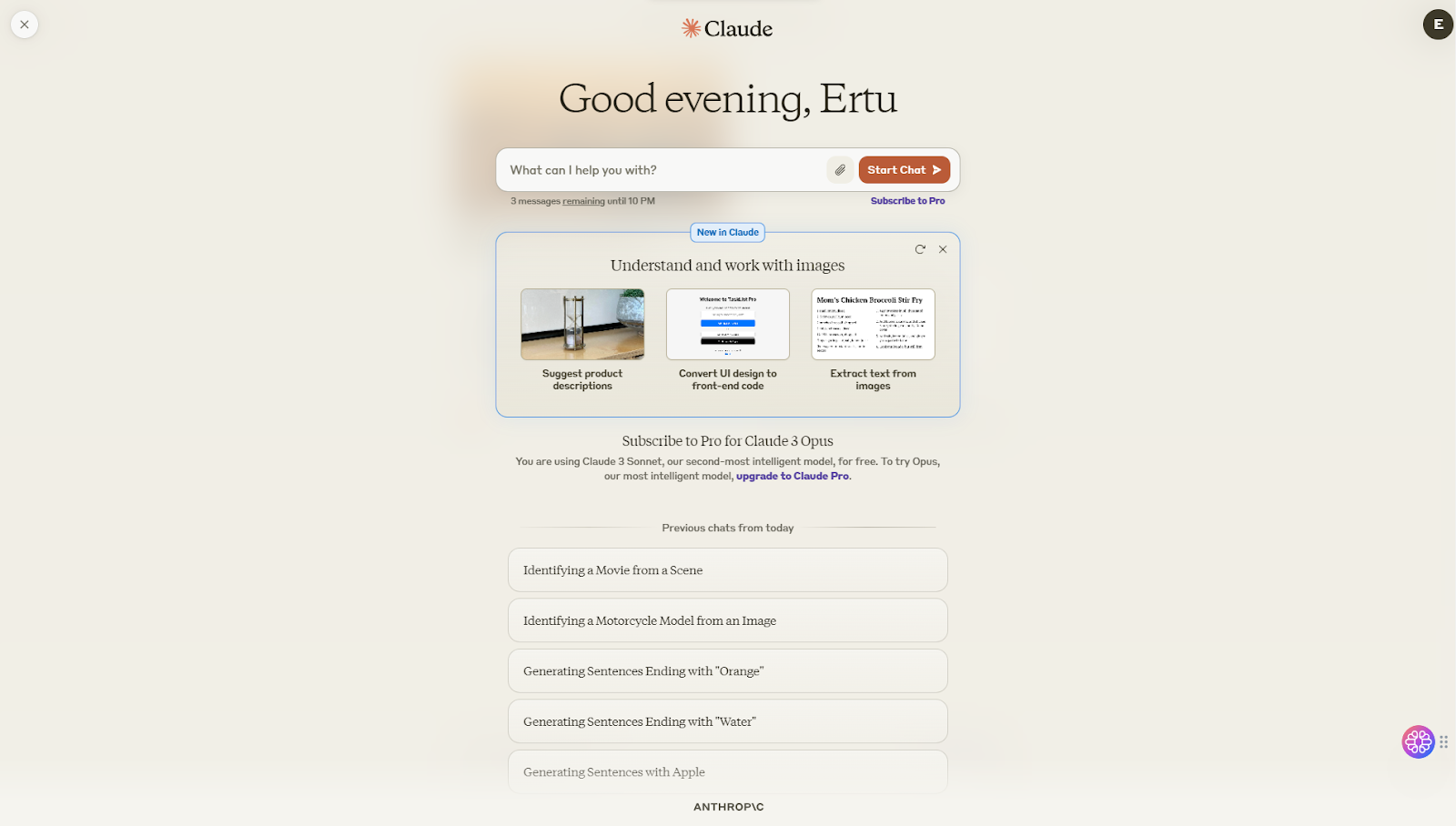
Claude 3 Model Sizes
The Claude 3 model comes in 3 sizes with advantages and disadvantages designed for different use cases.
- The Claude 3 Haiku model, the most compact and fastest of these sizes, is ideal for automating basic tasks and completing your daily tasks. Powering the free version of the Claude chatbot.
- The Claude 3 Sonnet model is ideal for completing complex tasks such as product recommendation, code generation, quality control, marketing, and social media post generation.
- The Claude 3 Opus model, which you can access with the Claude Pro subscription, is ideal for completing complex tasks such as graph analysis, research, unique idea generation, and finance.
How to access Claude 3?
To access Claude 3 models, all you need to do is head to Anthropic's official web chatbot interface. You can experience the Claude 3 Sonnet model from 159 countries by simply creating an account. If you want to experience the Claude 3 Opus model, you must have a Claude Pro subscription. The Claude 3 Haiku model is not currently available and accessible.

Alternatively, you can also use the new Claude 3 Models on TextCortex, for free with rate limits. TextCortex's advanced retrieval augmented generation capabilities unlock Claude 3 models' potential to the fullest.
Is Claude 3 Better than GPT-4?
In the Anthropic article, Claude claims that the 3 Opus model outperforms the GPT-4 model. Although this is a true claim according to the benchmarks, it should not be forgotten that it is compared with the default GPT-4 model, not the GPT-4 Turbo model.
What is GPT-4?
GPT-4 is an advanced large language model developed and published by OpenAI. GPT-4 large language model is designed to assist users in a wide range of tasks, from tasks such as text generation, paraphrasing, and research to tasks such as ad copy, social media caption generation and code writing. GPT-4 generates new, unique, and human-like responses by analysing user input with its trained data, web search feature and parameters.
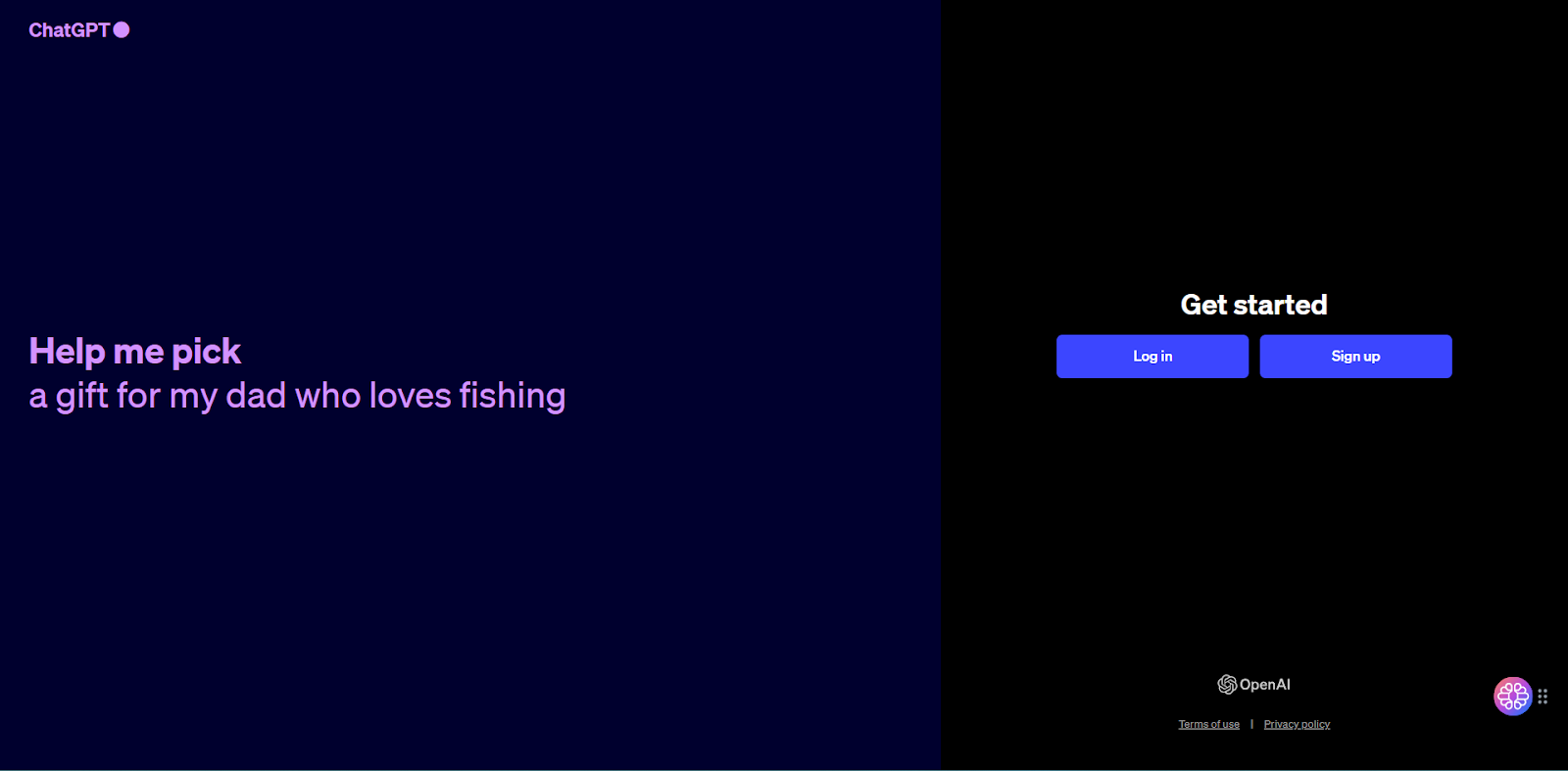
GPT-4 Capabilities
OpenAI's GPT-4 large language model can analyse text, code, visual and audio inputs and generate output by understanding them. This makes GPT-4 an effective tool for analysing documents that include graphs, charts, and images such as PPTXs and PDFs.
The GPT-4 model can generate human-like and concise output to user queries using AI technologies such as natural language processing, machine learning, deep learning, neural networks, and parameters. In other words, you can produce various outputs, from email to code. Additionally, the GPT-4 model can generate output in 25+ languages.
What Can You Generate with GPT-4?
You can generate any written content using the GPT-4 large language model. Some of the most popular content you can generate with GPT-4 are:
• Emails
• Paragraphs
• Essays
• Blog Posts
• Research Papers
• Outlines
• Summaries
• Website Copy
• Product Descriptions
and much more. All you need to generate all this is to enter a prompt to GPT-4.
How to access GPT-4?
Although OpenAI offers free access to the GPT-3.5 model to everyone, to access the GPT-4 model you need to purchase an OpenAI Plus subscription, which costs $20 per month. When you get a Plus subscription, you can access OpenAI's GPT-4 large language model and its advanced features such as custom GPTs, web search and more.
Claude 3 vs GPT-4: Performance Comparison
Anthropic's Claude 3 and OpenAI's GPT-4 are both powerful language models that have been making waves in the world of AI. Let's compare these two large language models and discover their similarities and differences.
Performance
While introducing the Claude 3 Opus model, Anthropic said that it had higher benchmark scores than GPT-4. While this information is correct for the original public GPT-4 model, it is not valid for GPT-4 Turbo models. For example, according to Anthropic's report, the Claude 3 Opus model has a score of 95.0% in the GSM8K benchmark, while the GPT-4 model has a score of 92.0%. However, in the same GSM8K test, the GPT-4 Turbo model has a score of 95.3%. If we compare the Claude 3 Opus model with the default GPT-4, it is possible to say that Claude 3 Opus has higher performance. However, if we add the GPT-4 Turbo model to the equation, we can say that the Claude 3 Opus model is behind in terms of performance compared to the GPT-4 Turbo.
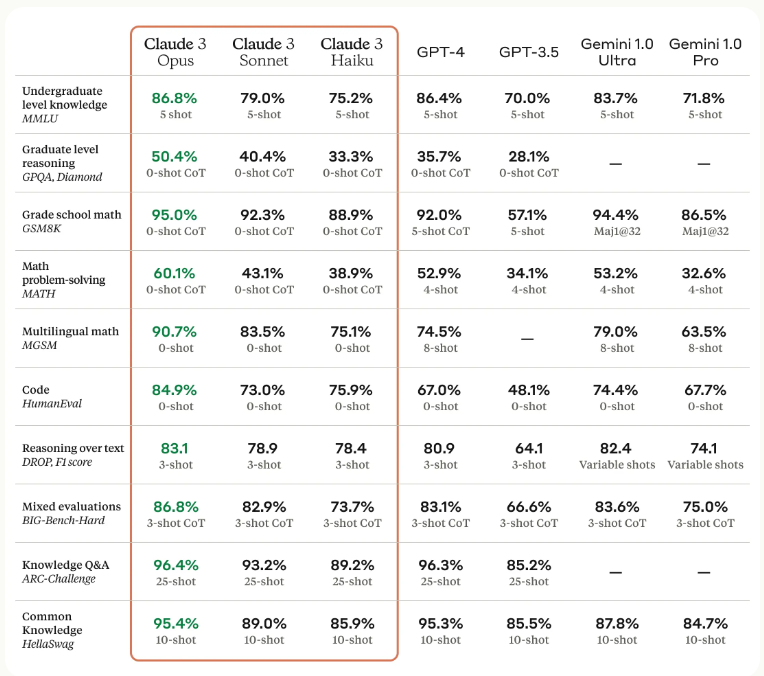
Input/Output Variety
The Claude 3 model can analyse textual and visual inputs, extract insights from images, read graphs and charts, and generate output by processing them. Additionally, the Claude 3 Sonnet model allows you to upload 5 documents, each up to a maximum of 10MB. If there is a chart or visual in the documents you upload, it can analyse it and give a response. However, the Claude 3 model is only capable of generating textual output.
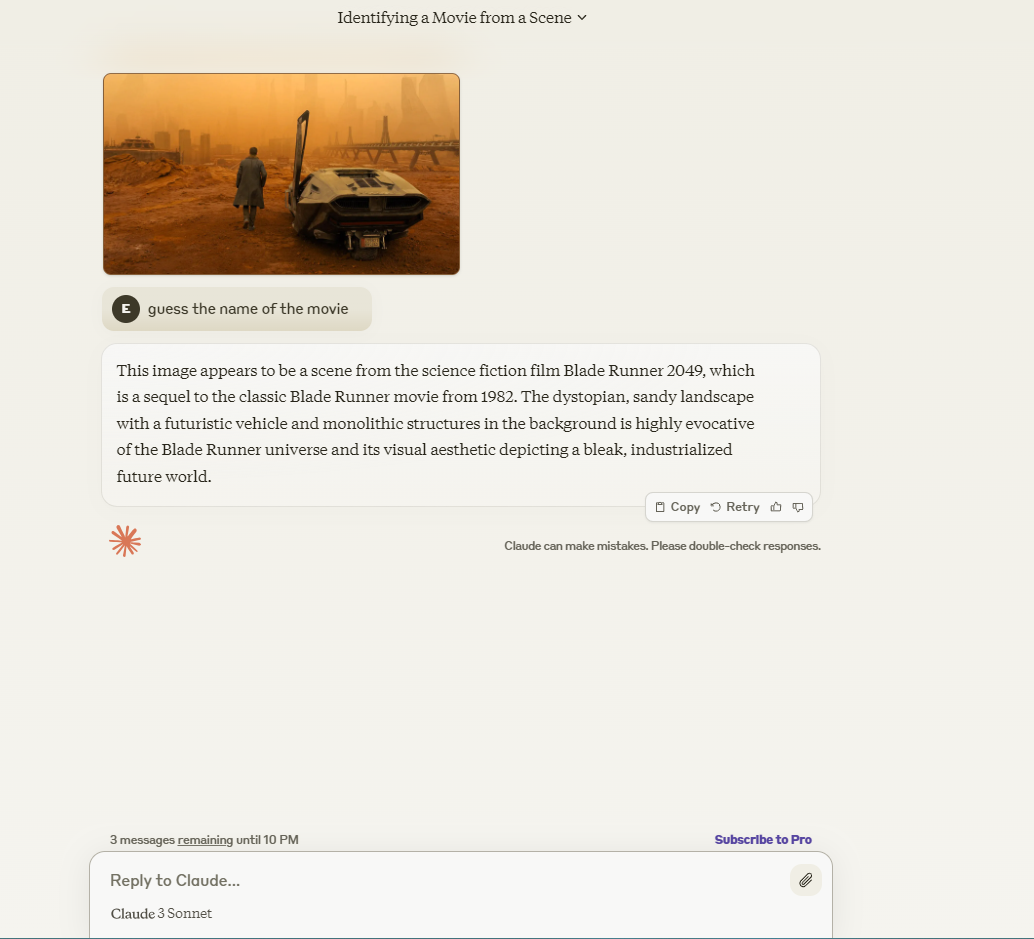
On the other hand, the GPT-4 model can analyse document, textual, visual, and audio inputs and produce accurate output using this information. Moreover, the GPT-4V model can generate new and unique images by analysing your textual or visual inputs. If you have a job where you need to produce images, GPT-4 will be a better choice than Claude 3.
Prompt Following
Large language models generate output based on user prompts. The better a model is at understanding and following prompts, the more useful it is for the user. The Claude 3 Opus model has more advanced prompt following skills than GPT-4. It can generate 10 logical outputs by following a given prompt, while GPT-4 can only generate 9. In comparison, the Clause 3 Sonnet model was only able to generate 7 logical sentences in the same test. Therefore, GPT-4 can follow prompts better than Claude 3 Sonnet, while Claude 3 Opus can follow prompts better than GPT-4.
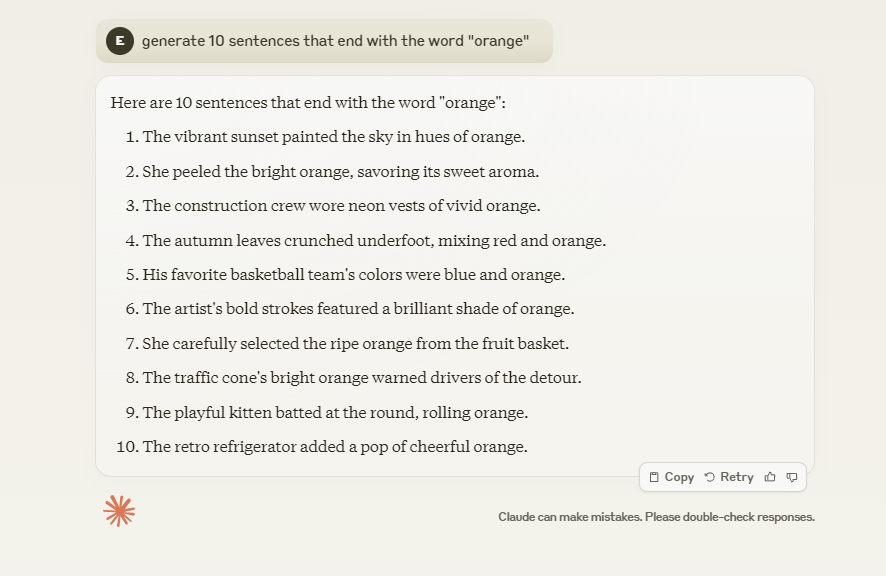
Best Alternative to Both: ZenoChat – Customizable AI Assistant (Also comes with Claude 3 Models)
If you are looking for a conversational AI assistant with more features than Claude 3 and GPT-4, and that you can customize, ZenoChat by TextCortex is designed for you. ZenoChat aims to support you in a wide range of tasks, from email generation to product description writing. ZenoChat is available as a web application and browser extension. The ZenoChat browser extension is integrated with 30,000+ websites and apps, so it can accompany you anywhere and anytime.
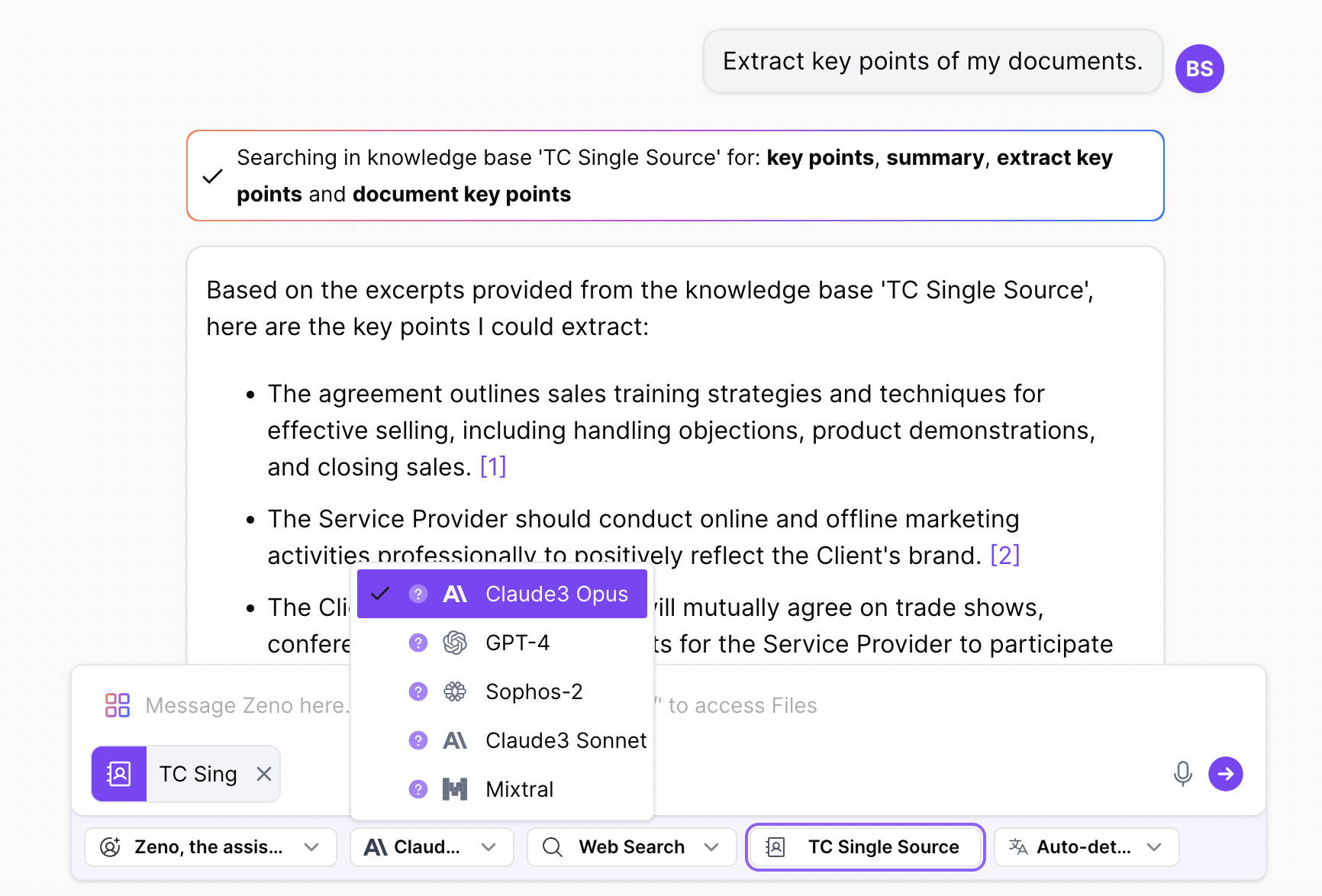
ZenoChat offers 3 different large language models and a combination of speed, consistency, and creativity suitable for your target task. Using these models, you can generate poems, stories, social media posts, marketing copy, blog posts, articles, and email types in 25+ languages. Moreover, ZenoChat can paraphrase, translate, expand, or summarize your existing texts.
ZenoChat offers a fully customizable AI experience, thanks to our "Individual Personas" and "Knowledge Bases" features. ZenoChat's "Individual Personas" feature allows you to tailor its response style and tone as you wish. Our "Knowledge Bases" feature enables you to upload or connect information that ZenoChat will use to generate output. Additionally, this feature allows you to integrate your Google Drive and Microsoft OneDrive with a single click.

%20(58).png)
%20(13).png)
%20(12).png)
%20(11).png)